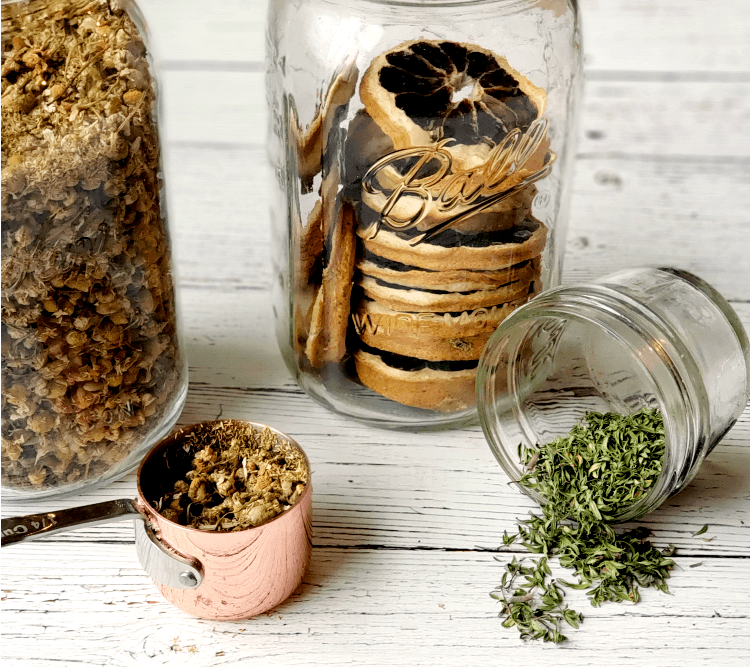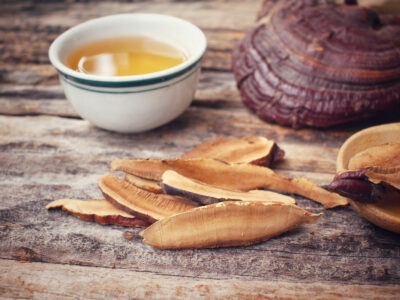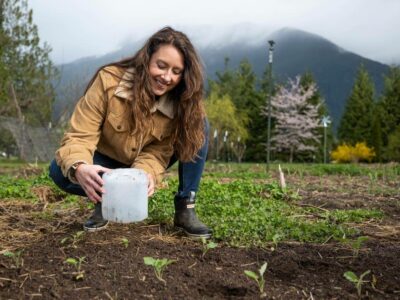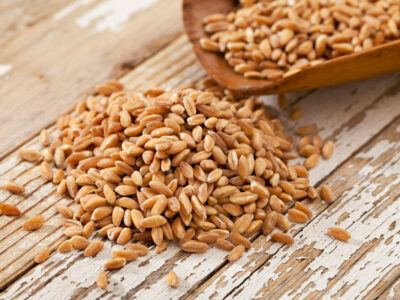Herbal home remedies for cold and flu that really work and how to choose the best one for you. When I first started looking at natural and home remedies I confess I was a little bit overwhelmed on how to go about doing it safely and effectively. Using home remedies and herbs isn't the same as picking up a bottle off the store shelf for whatever ails you. It takes understanding how it works with your body.
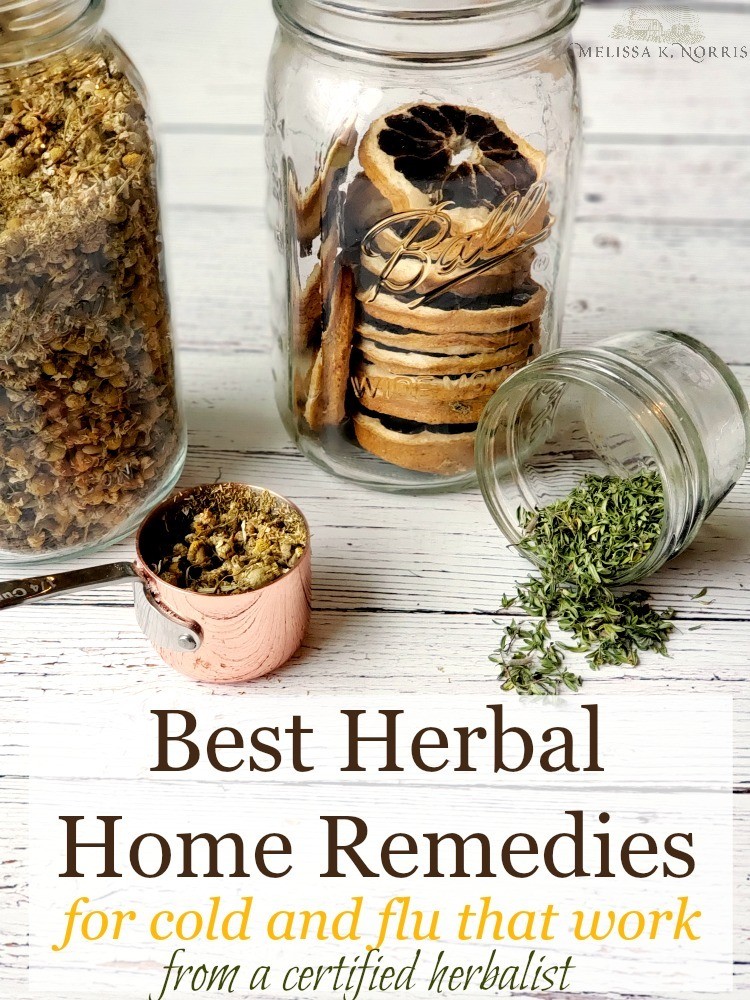
Without this understanding, many people don't think herbs work, but it's more not knowing how to pick the best one for them based on their body and symptoms. You're going to love this episode and blog post because it breaks it down along with giving teas and different options in home remedies for cold and flu by registered herbalist Rosalee De La Foret.
Listen in below to the full podcast, Episode #202 Best Herbal Home Remedies for Cold and Flu, of the Pioneering Today Podcast, where we don’t just inspire you, but give you the clear steps to create the homegrown garden, pantry, kitchen and life you want for your family and homestead.
Disclaimer: This shouldn't be taken as medical advice, diagnosis or treatment. Always consult your medical professional before using any herbs medicinally.
Resources for using herbal home remedies for cold and flu season:
Have you ever stared at a list of herbal remedies, wondering which one to use for yourself or your family?
After reading Alchemy of Herbs by Rosalee de la Foret I knew I had to get her on the podcast and pick her brain. She's such a wealth of information and I really think you're going to enjoy all the great knowledge that she shared with me
You can click on the links below to go straight to the specific sections, or read this post in its entirety.
4 Components of Energetics to Pick the Correct Herb for You
How to Decide Which Herbs to Use for Fever Based on Symptoms
How to Use Herbal Baths for Fever Reduction
How to Make Herbal Infused Honey
How to Use Herbal Home Remedies for Cold Chills
How to Make Cayenne Tea for Chills
How to Make Oregano or Thyme Tea for Chills
Top 5 Medicinal Herbs to Grow at Home
Melissa: I am so excited to get to chat with you today, Rosalee. So welcome to The Pioneering Today Podcast.
Rosalee: I'm really excited to be here. Thanks Melissa.
How to Choose the Right Herb For You
M: I purchased your book right when it came out and I dove into it and learned so much, I think within just the first couple chapters. It really opened my eyes and changed the way I approached choosing the herbs that I was using medicinally. For those who haven't read your book, how you go about choosing the right herbs for you?
I came from a very typical western thought process, worked as a pharmacy tech for 18 years, so it was very much, you have a headache, take Tylenol or ibuprofen or whatever. So I was approaching herbalism from that background. I wanted herbalism to be similar, like “This is the herb you use for a headache, this is the herb you use for a cough.” That type of mentality. But herbalism is really different than that. And the approach is different from that. What I loved is how you explained in your book how you pick the right herbs to use for you based on you and your body and then also the properties of the herbs.
R: It's very common, especially when we start out using herbs to apply that principle, you think I have a headache what do I use? It's very intuitive for people who grew up using over the counter drugs or pharmaceuticals like that. I call it, whether it's in herbalism or in western medicine, I call that the one solution syndrome. Where's it's this idea that you have some kind of ailment and then there's just one solution to it. And like you said, herbalism has a little bit different approach.
One of my teachers, he's fond of saying that while herbs have become really popular these days, it's like herbalism hasn't quite caught up with that popularity, although it's certainly growing as well. Herbalism is not like using the principles of western herbalism, but instead of using drugs, using herbs instead.
Herbalism has its own system of analysis or diagnosis and it's own system of figuring out how to match herbs to people.
You can certainly, you know, the whole like “I have a headache, which herb to I use” or whatever the case may be, like “I have a rash what herb do I use?”, honestly, sometimes that method does work and it's great when it does because it's simple and easy.
But in my experience, it can create a lot of overwhelm because, for example if your crowdsourcing like in a group, asking them what to take for a headache, you might get 150 different herbs as a response or, even if you look it up in a book, there might be 10, 20 different herbs listed. So then it gets kind of confusing, “which one do I use?” But then, even in that situation, if you chose one of those herbs, it might not work for you.
I'm very passionate about helping people to use herbs for their health every day. And in that, I want people to use them effectively and get results from them because it's not very fun to be like, “Okay, I have this ailment and I'd like to use herbs, I'm interested in using something more natural” and then you try something and it doesn't work cause that's just the flow. It kind of inhibits more trying out of new things. I really like to see people get results.
M: Yeah, and I think too a lot of people try herbs and they use them in the manner that we would use an over the counter thing. Where you take it once or twice and expect that it's going to solve the problem or bring you immediate relief. Occasionally, depending on what it is, that does sometimes happen with herbs, but there's so much more to the body. I've found, at least for me personally, for a lot of things is using the herbs throughout the day a lot more frequently, especially if it's like, a really bad cold or cough or something like that. It's not like you take it and it's going to magically work for 12 hours straight in most cases.
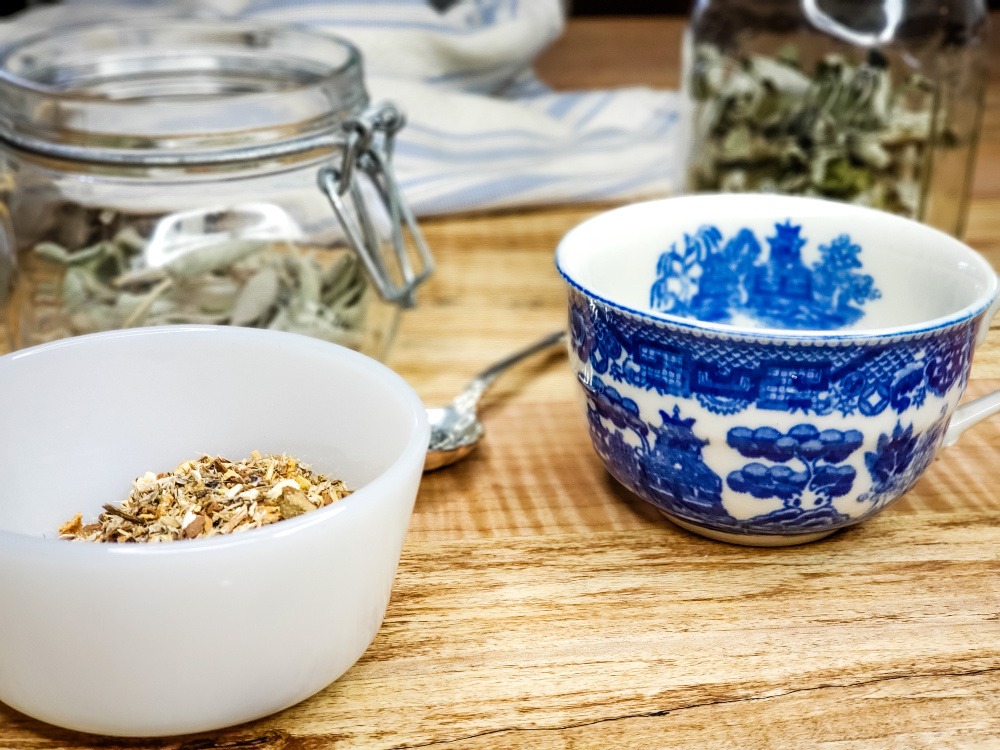
It's a mindset shift. There's other herbs that your taking on a daily basis and it's a long-term effect and no, you're not immediately gonna notice an immediate difference. Having the right mindset and expectation of using herbs medicinally is important.
The 4 Qualities of Energetics to Choose the Best Herb for You
I love how you went into, so I'm hoping you'll dive into this a little bit, but it was kind of the chart you had where you look at your own body and if you are dry, cold, hot, wet, that kind of thing. Can you walk us through that aspect in a nutshell?
R: Sure. So the type of herbalism that I practice is what we can an energetic based herbalism. And that those energetics, it's kind of a strange term because it sounds kind of out there, but it's based on things that we feel and experience every single day. One part of that is understanding as people how the four qualities of hot and cold and damp and dry show up in our lives.
For example, you might know somebody in your life who always seems to be colder than other people. Like, maybe they're wearing a sweater when other people are wearing a tee shirt. Or they really like warm beverages and often like to have their hands wrapped around the hot mug of tea and vice versa. You might know somebody who tends to be a lot hotter than other people and generally they're the ones cracking the window in winter time, or wearing less clothing.
So those are the very broad aspects of looking at someone as hot and cold and then dry and damp. Again, just things we experience every day. Somebody might feel like their skin is often dry or their hair is dry and they have to use a lot of conditioner or use a lot of lotion on their skin. Or maybe somebody has a lot of dampness and they wouldn't want to be slathering their body in lotion all the time because it would just be too oily or too thick for their skin cause it's already damp.
And so we have our way of being in the world; we call that our constitution. Again, looking at these four qualities: hot, cold, damp, dry and then it's a matter of thinking about things in terms of comfortability. In our everyday life, like maybe sometimes somebody is regularly too hot and it's uncomfortable for them we could use herbs to cool that person down. Another way this comes out, I really like to talk about it in terms of colds and flus. Cause, you know, most of us have experienced it somewhat regularly with a cold or flu.
We can see those energentics come to light in that situation. So, for example, when you think about a time when you've had a fever and there's really a lot of different kinds of fevers out there. So this is a great example, if you have a fever and you have a western medicine way of thinking, oftentimes unfortunately, they just want to take some type of pill that's recommended to reduce the fever, which is not what we do in herbalism.
But a fever, is a fever is a fever, right? Or a cough is a cough is a cough. But with herbalism we look at things a lot differently. So with a fever me might say, “Oh, is this a hot fever or a cold fever?” And that means, does this person feel hot, are they restless? Are they tense or does this person feel cold? You know, are they shivering or are they covered in scarves and blankets? Are they craving warm things? So depending on the type of fever, we would use different herbs for that or a cough. You know, there's the kind of cough where it's like a dry spasmodic or hacking cough, which is very different from a cough where there's lots of congestion in the lungs. So it'd be a dry cough versus a damp cough, for example. So we would choose different herbs for that.
Again, we're looking at people and energetics and how the qualities of hot, cold, damp, and dry show up in our lives. That could just be our everyday life or it could be tied to a particular ailment. So that's just one aspect of it is people and energetics.
Then the second aspect is the herbs. We look at herbs in the say way in terms of their energetic qualities. So if an herb is hot or cold or damp or dry. That can sound weird at first but when, you know, I'll give you some examples. For example, would you say that biting into a fresh watermelon, is that hot experience or a cold experience?
M: I would definitely say a cold experience cause on hot days I always love to have watermelon.
R: Exactly. And what'd you call it? A dry experience or a moist experience?
M: Oh, definitely moist.
R: Yeah, so watermelon being cooling and moistening, and like you said, it's just intuitive to reach for that on a hot summer day. It's not often in the middle of winter or when it's really cold out that most people are thinking, “Oh, I really want right now is a watermelon” or when it's hot out.
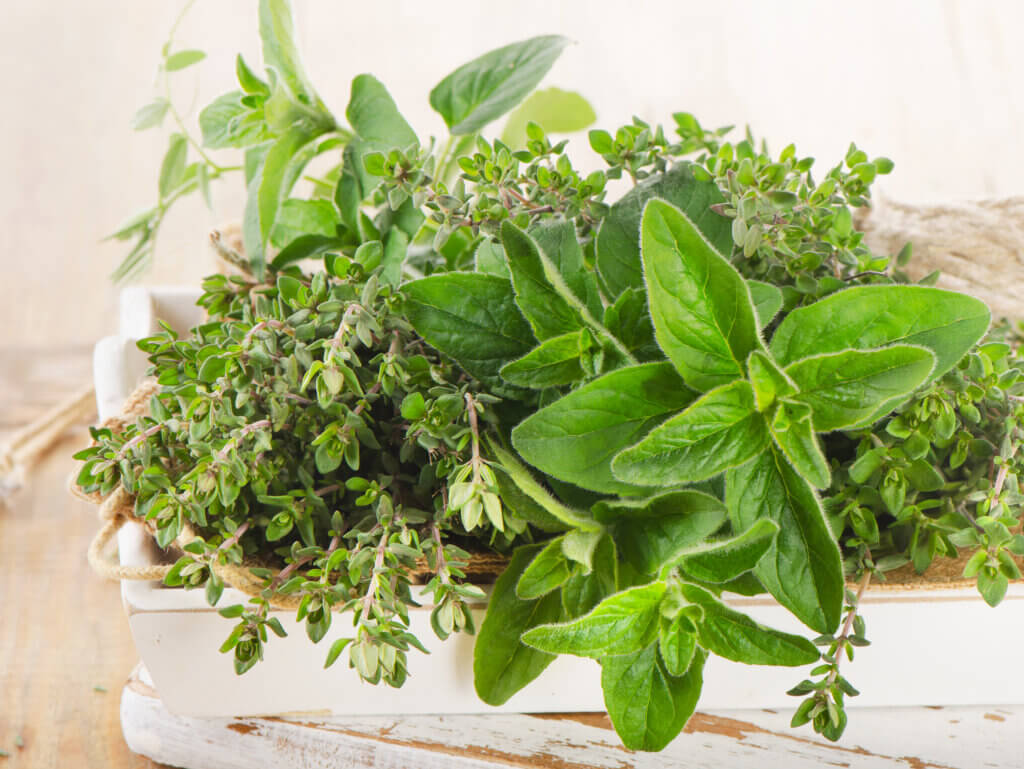
That's essentially, that in a nutshell, that's herbalism. That's figuring out what the qualities of some kind of energetic illness or just how someone's feeling and what are the qualities of the herbs and how do we match those together. It works the other way around too. In the middle of winter and we're cold, maybe it's damp out, but we're often craving that warm bowl of soup or hot cocoa, something that's gonna heat us up.
So the same thing goes for herbs and illness. Of course, this is how Chinese medicine looks at herbalism. This is how Ayurveda looks at herbalism and western herbalism as well as many, many, many other forms of herbalism around the world. And honestly it gets pretty complex and in-depth. People spend years and years and you could even say a whole lifetime figuring out these different energetic patterns and how to match herbs to the person. But for most of us, learning the basic principles is really going to serve us for 90% of our herbal health needs.
So it's something that we can begin to recognize everyday. It really is that common sense. Another example, in the summertime you spend a little bit too much time in the sun unprotected and you get a sunburn, it feels hot. Oftentimes it's dry. So what do we like to put on it? We like to put on something maybe like aloe that's cooling and moistening, and helping to relieve that heat. So that is way more effective than memorizing a list of what herbs to take for a certain thing. It's really beautiful and just makes so much sense. It's very practical and actionable.
M: Yeah, as I was going through that book, I determined that I'm naturally cold and dry and my husband is hot and damp. So it was really funny cause I'm like, boy, we're really like the opposite. But then, like when I had a cold and it was that dry, raspy, unproductive cough. I wasn't having a lot of mucus. So that was really fun because I actually got to use that filter, which I had never really used before. It was two or three years ago, I'm trying to remember when your book came out, but then I started going through my herb cabinet and I was trying to decide which type of tea I was going to make. And I got to use that filter and I felt empowered. This is such a great way to decide what to take for effectiveness and also just aiding my body. And like you said, sometimes it's what your normal constitution is, but then you have those acute periods where you're going through an illness or something that can change that constitution and being able to know which one to use at that time, is really awesome.
So I thought that was a great way as an introduction to thinking about it in that way and making that mind switch and the way that you choose specific herbs and putting it through that filter. Because you know, with our modern Western medicine, that's not something that we normally really consider at all. So thank you so much for breaking that down.
R: Yeah, absolutely.
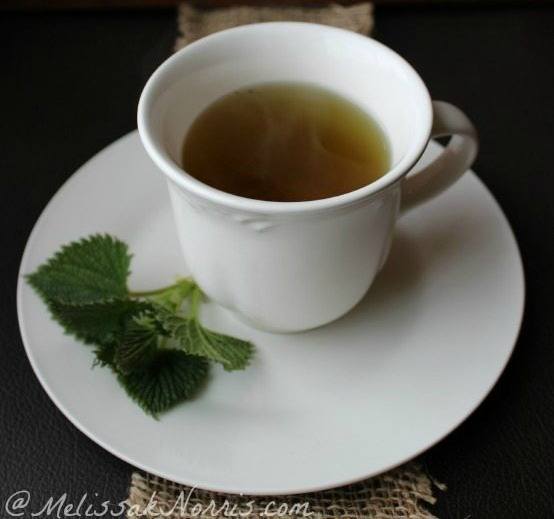
M: I do want to go back though. I think for a lot people, and probably myself included to a degree, we tend to reach for herbs once we've got an illness or once we have a symptom that's really bothering us. So cold and flu season, that definitely falls into that category. But, say you do have that hot fever where you are feeling hot, your not like in the chills part, what are some of the herbs that you begin to look at to consider helping aid that?
Factors to Consider for Fever Reduction Using Herbs
R: I mentioned that, herbalism – our first thought isn't to reduce a fever because a fever is seen as a very beneficial immune system response. It's actually making our bodies a very inhospitable place for our pathogens that are in us and so generally what we talk about is we want to support the fever process. So it doesn't necessarily mean do nothing because when someone has a hot fever, as mentioned, they usually feel hot and restless, intense. And they could have achy bones, or an ache in their bones and feel generally miserable. So it's not a matter of just being like, “Oh you have a fever. It's a beneficial immune system response. Good luck. Enjoy your uncomfortability.” No, that's not generally how we're thinking about it either. So in this case, we're wanting to support the fever process and if somebody's feeling that hot tense situation or wanting to bring relaxation and coolness to the body.
So, again, this isn't about taking something that artificially lowers the fever but can be used to, one of the terms as we open up the periphery or open up the skin, and allow heat to naturally escape. So that could be just bringing on the natural process of sweating, which is one way the body releases the heat in a fever. One of my very, very favorite herbs for this is chamomile.
I have to admit, back in the day, I thought chamomile was a pretty wussy herb. I thought it was for Peter Rabbit or to give a little bit to young kids or it was just something to have a little after dinner drink but wasn't like real herbal medicine. But I have since changed my tune on that.
And I think part of what gave me that misconception is that so often we take it in a tea bag and soak it for maybe three minutes in hot water and then we drink it and it tastes pretty tasty. But actually, we can use chamomile in very different ways and get really dramatic results. So what I like to do for a hot fever is use chamomile but in much larger dosages and with a longer steeping time. This is a top pic of my herbal home remedies for cold and flu when it comes to a hot fever.
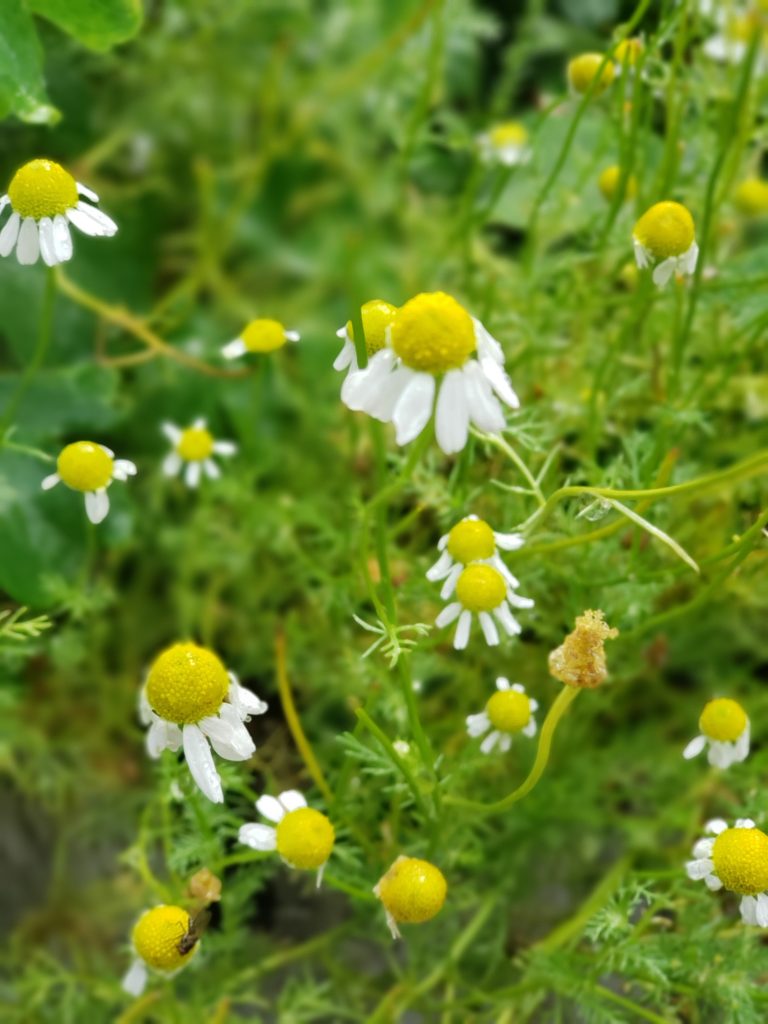
How to brew chamomile tea properly when you have a fever
So, depending on the person, and this is dosage is going to very for children versus adults.
Chamomile tea for a fever
1/3 to 1/2 cup dried chamomile flowers
16 ounces water
- Brew your chamomile in 16 ounces of hot water for 15 minutes.
- Keep the top of the cup covered as it's brewing to trap in the essential oils and medicinal properties.
- Strain and drink.
*basic adult size recipe
Taste: This is not going to taste like a tea bag cup of tea of chamomile. It's going to be very strong. It's going to be bitter, but it's not undo-able. I've found that when people have these hot fevers and they drink something like chamomile their body likes it so much that it almost, it tastes oddly good. It doesn't taste sweet or like ice cream, but it's something you can tell like, oh, my body's using this, it's really liking it.
Medicinal properties of chamomile
The way chamomile works so great in this instance is, first of all, it's what we call a relaxing nervine. So it relaxes tense qualities and relaxes the nervous system. So we talked about that hot fever, where we're having a lot of tension involved and there's often a feeling of restlessness, listlessness, and drinking chamomile tea, especially the strong amount, this is what it feels like…”Ah.” You just let go of that tension that's been building in your body. So that's very helpful.
At this dose as well it can have some pain relieving effects. So if somebody has those aches and pains associated with it, the fever, it also is helping to relieve those aches and pains. It's also working as a naturally cooling herb, so it's helping let that heat escape so the person can be a lot more comfortable. When you drink it like this as well it's also a pretty good sedative. So it'll make you sleep and that can be one of the best healing remedies during a cold or flu. When you have a fever and your feeling this type of hot listlessness, just letting your body sleep and relax comfortably is one of the best medicines as well cause it's allowing your body to rest and your immune system to jump in there and do it's thing.
M: Yeah, I love that. I was looking at my chamomile in my garden and their just about ready for me to harvest and begin drying to use this fall like this.
You listed out the different ways that it helps aid a fever. I think that's why, in a smaller dose, I love to take it if I'm having trouble going to sleep or I've had an especially stressful day and I can tell that I'm not really letting go of that tension having a cup at bedtime, of course, not at dose, helps to go to sleep. But all of those properties are one of the reasons I think a lot of people know it as a calming herb and using it at bedtime.
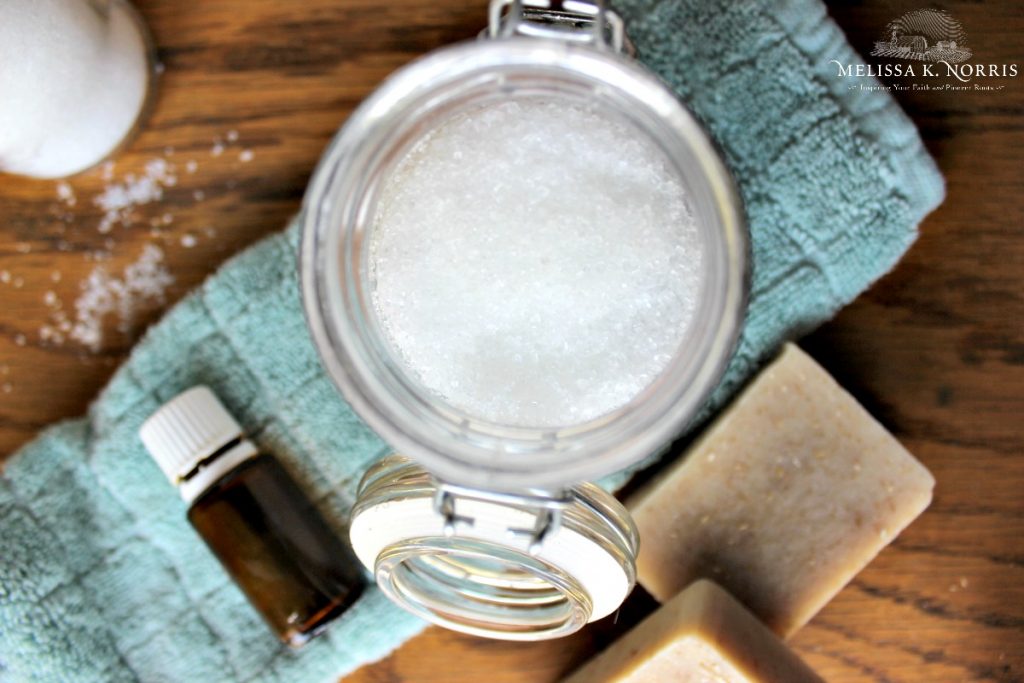
But I love the way you bring about it's important when you are using it for something like a fever, like a much more acute situation for that short period of time where you really need a dose that your going to brewing it in a much different way than you would be brewing just a regular cup of tea that you were taking mainly to enjoy rather than really aid the body with something like a fever. So I thought it was great. Thank you for walking us through that.
Use a herbal bath to help aid fever reduction
R: Another way I really like it for a fever is as a bath herb as well. So you make a similarly strong cup of tea and just put that in your bath water. I like to make the tea first and then put it in the water as opposed to just putting the chamomile in the bathtub. Because it's less of a cleanup but also because it's making a stronger brew. Even a tepid bath with chamomile can be relaxing to the muscles, relaxing the tension an also helping get that heat out. So many lovely ways.
And you mentioned that you have fresh chamomile also blooming right now. I've been harvesting it for the past couple weeks and it's so fun cause the more you harvest, the more you get. So I'd go out there every couple of days and keep harvesting it. So it keeps flowering.
Chamomile infused honey
One of my favorite things to do with chamomile as well is to take those fresh flowers and infuse them into honey. Just fill the jar, whatever size you want, about half to three quarters full with chamomile and then pour honey over that, give it a good stir. Might add a little bit more honey after you stir it and let that sit even for as long as three days. After three days you start tasting that honey and it just tastes so lovely and it's really great for a sore throat. You can use it to just sweeten your teas and it gives it that chamomile flavor in it as well. That's a great thing to be able to do with the fresh chamomile, but it doesn't quite work as well with dried.
M: I love that. Now do you then try to strain out the flowers from the honey or just leave them in the there until you've consumed all the honey?
R: It depends. You can strain it out. And if you do, I recommend putting the honey, in the jar, in a warm water bath just to make it a little bit more liquid and then pour it out through a strainer. It depends on if that bothers you to have flower parts in your honey. Sometimes it bothers me and and sometimes it doesn't. For example, if I'm using that honey for tea, I don't really like flower bits in my tea. I know that doesn't bother some people but I just don't like it. But just having a spoonful you can just chew on the flowers and use them in that way. So either or.
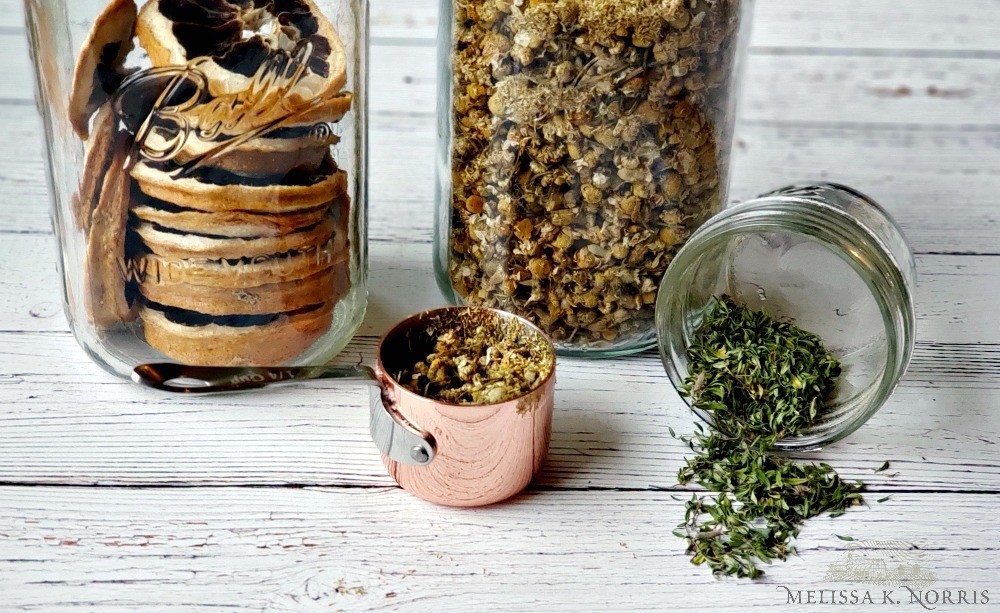
M: That is a great tip. I love it. When I go into harvest fresh again I'm going to have to get a jar of that going and trying it. Thank you for that tip.
How to Use Herbs for Cold Chills
Since we did cover in such good detail some ways to help with that hot dry fever, what are ways that you tried to aid the body if you have the shakes and you just can't get warm. You've got like five blankets on top of you and you're just freezing cold with a fever?
R: Yeah. We mentioned before to have good expectations about herbs and what they can do and when they're gonna work for you, which is a really great conversation to have because it is a little bit different. And with fevers, I feel like these herbs that we're talking about, whether it's for the hot fever or the cold fever, you really can fee a profound difference and profound relief almost immediately. And that's nice, especially when you're just starting out with herbs to just be like, oh yeah, it works. I can feel it right away.
So for a cold fever, when you feel like your shivering, oftentimes this is the beginning of a flu. Some of the first symptoms that you might have, it can happen at the beginning of a cold too, even if your not going to have a full blown fever. But you just get that feeling of being cold and there's unmistakable feeling where you're like, “Oh, no, I know what this feeling means.” And the great thing about recognizing that at the beginning and using these herbs, I'll talk about that in a minute, is that you can really help shorten the duration of the illness, which is a really powerful thing that herbs can do.
So when we're feeling cold and we're shivering, our body is obviously trying to warm up, right? It's trying to form a fever, which is again, that beneficial fever or immune system response. So in this situation we want to say, “Okay, my body's trying to warm up, how can i help it?” We can definitely help it by putting on a scarf and a hat. Getting snuggled under the blankets. But we could also be drinking, warming herbs. Herbs come on a scale. So there are some super hot herbs that are really spiky and really warming. So in that case we might think of things like cayenne pepper and you can make a tea out of cayenne pepper. A lot of people do this as a way again to short the duration of the illness. So not only heats your body up but does so in such a powerful way that they can also shorten the duration of the illness.
Using Cayenne Tea for Chills
To make cayenne tea I recommend starting with a very little bit of cayenne because you want to figure out what your body can handle. That's just, well, there's a couple things. There's what your body can handle in terms of the cayenne, but there's also the potency of the cayenne pepper because that can vary greatly. So you want to start off with just a little bit. We might start off with a quarter teaspoon of cayenne powder and you stir that into just boiled water. I like to add a little bit of honey and a little splash of lemon and mix a little bit better tasting. And you sip that very slowly. You don't want to drink it too fast or it might make you nauseous if it's very hot.
So you'd start there with just very little but as soon as you're sipping that hot water with the cayenne, it's a really cool feeling. Anytime, you've probably felt this if you'd had a spicy soup, you can feel that hot liquid going down to your stomach and then you can feel it warm up your core and just spread outward. It's a really cool feeling and it really is just so relieving to the fever process because your just helping your body heat up. So that's kind of an extreme one, the cayenne.
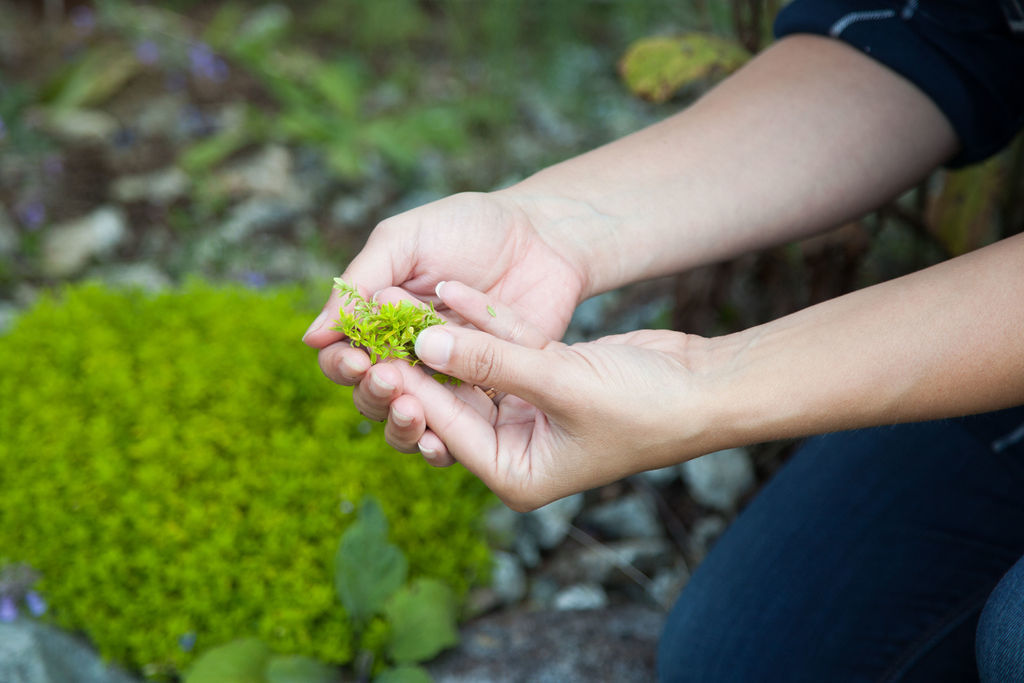
It's loved for shortening the duration of a cold or flu but doesn't have to be that dramatic.
Using Oregano and Thyme for Colds
Some other herbs that I really like for this stage are things like thyme and oregano. So again, culinary herbs that we're familiar with in our spaghetti, but they're actually quite spicy and potent and they make really lovely teas that can be used to help your body heat up. And they're just so relieving when you're cold and shivering and you have that warmth spread through your body. Again, it's like that “Ah” feeling, but kind of in a different way, right? Because, before we were releasing that tension and now we're kind of building up heat in our body.
So for both oregano and thyme, I use them similarly. I'll use it anywhere from one to three teaspoons of the dried herb steeped in 12 ounces of water.
How to Make Oregano or Thyme Tea
1 to 3 teaspoons of dried herb
12 ounces of hot water
- You want to steep that covered because there's lots of volatile oils in those herbs that can escape through the steam. So cover that, trap those in. This one doesn't need a long steeping time because of those aromatic qualities come out pretty well.
- I'd steep it just for about five minutes or so.
- It can be sweetened with something like honey, which of course has it's own beneficial properties as well. Then sip that and feel that warmth spread through your body.
M: Okay, I love those. And I've got all of those herbs going in. I need to get out there and begin harvesting even more of them and building my supply back up and get those drying.
I'm pretty fortunate here. I know there's more healing qualities when you're harvesting the herbs at different times of the year. But I can almost have oregano just outside my back door. It's in our southern exposure and tucked right up against the eve of the house there. It can almost be harvested almost year round but not with my thyme. So I've got to get out there and get those.
I love to take a bone broth when I'm just kinda feeling under the weather, I lie to add extra herbs to that so it's not really a tea but I heat it up and then can add some herbs to give it some more flavor and if I'm just going to be sipping on it. So I guess I'm making a bone broth tea, so I'm definitely going to pay attention to adding some more oregano and thyme when I'm doing that.

I'm really glad we touched on fevers too because one of the reasons I actually became really interested in going more natural and looking at using herbs medicinally was one, because I had a bunch of health issues and if by changing my food to more natural, unprocessed, you know, that whole thing, made that much of a healing difference, what would herbs do? It really opened my eyes and was the way that I started down this path.
Herb Safety
And then my daughter, when we was about two years old, was diagnosed with von Willebrand's disease, which is a blood clotting disorder. And that means that a lot of the stuff when I was using over the counter medicine, though it's a lot less now, but like, when my son, who's a little bit older – he's four years older than my daughter, would get, as a child, a high fever and you get nervous, especially about younger children getting those high fevers. And of course you want to make them feel better cause you know, they're miserable, I can give him pretty much anything over the counter. But with my daughter having that blood clotting disorder, we're extremely limited in the things that she can take. Even with herbs, I still have to be careful because she does have clotting issues. But I really started to look at herbs because when she had a fever, there's very little that I could actually give her that would help her find some relief and some comfort. So I was really glad that we covered the different herbs and stuff today so I can tuck those away in my arsenal when she comes down with things.
R: Yeah, it's really amazing how effective they can be. And they often, when we're using those whole plant medicines, they don't have the serious adverse effects because they're more balanced in nature. So everything that they do is has kind of a cushion to them in some respects. So they can be much safer and just as effective as many over the counter remedies.
M: I'm going to ask but if you don't know the answer to this that's totally fine, but I am super curious. I know a lot of people aren't really familiar with von Willebrand's. I had never heard of it until my daughter was diagnosed with it. But with the clotting factor, as soon as you get a cut, your body sends things to that area for the blood to begin to form a clot. With von Willebrand's disease, her body, and her specifically there's varying degrees of it, she only produces about 30% of what a normal person would to form a clot. So it takes her longer to form a clot than a normal person. And the clot itself isn't as strong. So she gets a scab at a cut, it takes it a lot longer to heal. The scabs aren't as strong. And, of course, if there was anything internal then those clots are weaker.
A lot of herbs, like cayenne and some different ones that people say to put on a cut because those can interfere with a clotting factor. Do you know if there are any herbs that help aid the body that don't affect the clotting factor when it comes to wounds?
R: There are things I would wonder about, but I can't say that I have experience using herbs in that way and can say like, “Oh yes, you know I've worked with 20 people like this and I have these results to share with you.” I would be curious about yarrow. Yarrow is a really amazing plant. Yarrow itself can teach us so much about how versatile herbs can be. We often thing of drugs or even herbs doing this one thing, but yarrow does so many things that we call it the harmonizer, especially with blood. Yarrow is used topically to stop bleeding. And then it's used internally when there are things like varicose veins and there's stagnant blood or it can be used on bruises, which is also a stagnant blood condition. So it moves blood, but it also stops blood flow when used on a wound. so I'd be curious about that. But again, I cannot say that I've tried it and share my experience with you on that.
Get Melissa's Traditional
Fire Cider Recipe
Get my free traditional fire cider recipe & guide with my personal adaptations and research with scientific studies and data on the medicinal properties of each ingredient. I'll shoot the download guide straight to your inbox along with weekly articles, resources, and offers on my best deals to help you on your homestead journey (free to hit unsubscribe at any time but then you'll be missing out).
M: Right. And I appreciate that. I will definitely dig into that. I just bought a whole bunch of yarrow seeds. A lot of areas of the country or world I should say, yarrow just kind of grows almost wildly but it's not one, at least in our immediate vicinity that I really see growing wild around here. So I purchased some seed because I'm going to be growing this myself so I can play with it somewhere. So I'm glad you said that cause I already have my seed and I'm ready to go to get that sown so it can come up for us next spring.
R: I think you live on the other side of the mountains from me. I'm over here where it's drier. Yarrow really likes the dry fields, but it will grow, with more moisture but it needs to be planted and coaxed along a little bit.
M: We have a rocky flower bed that retains a lot of the sun's heat that we get and doesn't get waterlogged so it's a little bit dry. My more drought plants or plants that don't like to be overly wet, I put there.
R: That's perfect.
M: Okay, perfect. Good to know. Yay! Thank you so much. I feel like we have just barely scratched the surface, but I feel like we got so much information and great tips for things that we can tactfully use and do when we're starting to come down with some symptoms, especially with cold and flu in regards to fevers.
Rosalee's 5 Top Medicinal Herb Choices to Grow at Home
We were chatting a little bit before we started to hit record. So I'm going to ask – I feel like this is a bonus round – but you guys have a homestead and you have 20 acres and you told me you grow 100 herbs medicinally and I was like, “Okay, I want to be you.” I grow quite a few herbs…I'm going to have to count them now. But if you were starting out growing your own herbs to use them medicinally, what would be your top pics. Like you know, absolutely start with these ones or kind of your favorites. I know it's like picking a favorite child, it's impossible. But if you had to with the herbs, what would be your top picks for growing at home?
R: Well, that's a great question. So quick, it kind of depends on what zone people live in and what will grow well with them. So that's always the two things to think about is what will grow well in your area, and two, what will I use? So those are great lenses to think about. But let's assume that everybody lives in zone 4 like me and they have my same favorite herbs. Another thing to think about is what herbs are really idea fresh as well. Oftentimes we dry herbs and that can be one of the best ways to have herbs is dry because it breaks down their cell wall and it makes it easier to extract into safety. So fresh is not always necessary with herbs but it's nice to have those herbs that are ideal growing fresh in your own garden cause then you can use them right away.
Tulsi
One of my favorite herbs to grow is tulsi, or holy basil. It's related to our culinary basil but it's quite different and it grows just like basil. So I'm in zone four and I start the seeds in March and keep them inside for several months. Then I plant them outside and under a covering that holds in the warmth in the first spring months when it can be kind of cool outside. But tulsi has a great flavor and will grow into a thick little shrub. It's wonderful for so many things. It's a calming herb, builds strength, and brings natural energy.
One of my favorite things to do with it is just to harvest it while fresh, chop it up, and put it in water in the fridge overnight. The next day I strain it off and the water just has this really fresh, clean, delicious flavor. Tulsi has also been studied extensively for helping people who have chronic pain, like rheumatoid arthritis, osteoarthritis. It's been studied extensively for people with type 2 diabetes and other metabolic disorders. So it has some heavy hitting uses. As well as it tastes great and can bring overall strength and calm to anybody who uses it. And it's generally safe for most people. So that's one of my very favorites.
Chamomile
We mentioned chamomile. That's another favorite of mine. It takes a lot to harvest a little bit. That's another good thing to consider when growing plants…am I going to harvest this? How much do I have to grow a pretty good patch of chamomile and harvest it regularly, it takes time to dry. It's so phenomenal though. I love doing that and this year I just got a little chamomile rake so I'm not plucking each individual flower by hand. It's similar to a berry rake so I can harvest more chamomile in one shot. I definitely love that.
Thyme
And then my culinary herbs are often my most used herbs. Growing thyme is lovely. Not one one of my very favorite culinary herbs, I really love thyme in soups, for example, all throughout the winter months as well as a tea as I mentioned. But another thing about thyme is that the bees love them. So if you're growing a garden and thinking about pollinators, the bees just go crazy for thyme flowers. My thyme has grown so big that I don't need to harvest all of it. So I harvested half of my thyme this year and dried it and processed that for winter then let the bees had the other half. I just couldn't bear to cut it because there were plenty of flowers in my garden, but they loved that one so intensely that I had to let them have something.
M: I noticed that with my oregano. Oh, the oregano blossoms and the bees. I wish we had hives on our property. I would love to taste the honey that's made from the pollen of oregano, and I'm sure thyme as well, because I know the pollen affects the flavor of the honey. I know we're on a side note, but we have talked quite a bit about herbs and honey. I've noticed the same thing though. They really like, even though I've got tons of flowers and cottage flowers and do a lot of companion planting with lots of different flowers as well to encourage them, they really zone in on those two particular herb blossoms.
R: Both of those are so great and I love growing oregano too. Just a tip, I happen to prefer thyme as a culinary herb over oregano just as a preference, but oregano, when you grow that, it's much easier to process. There's less little tiny stems and it's just easier to dry and process it than thyme. It's like tips of a lazy slash practical herbalist.
M: I love those tips cause I'm the say way. In fact, when you were talking about that chamomile rake I was like, “What?! They make such a device?” I am so Googling it as soon as we get off.
R: Yeah, it was like, life before the chamomile rake and life after.
M: I love it. And sorry, I totally squirreled on that but did you have a few more that you wanted to walk us through? Cause I have not done holy basil. So I'm making a list; we're adding in the holy basil this coming spring.
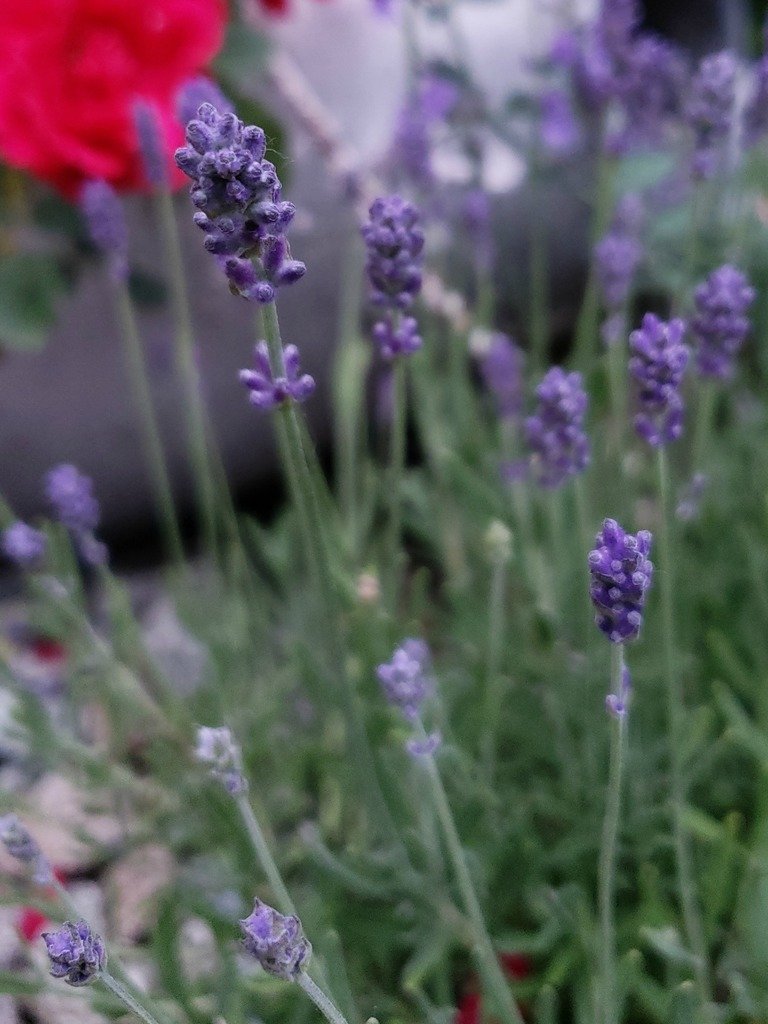
R: Nice. And holy basil makes such a great tea. We could go on about holy basil. It's a revered herb in India, used as an adaptogen and, yes, so many great benefits to that one. You're own freshly dried tulsi is going to be way better than most of what you can just buy. So that one's a great one for you to just have in your own garden.
Lavender
Another one that I really love is lavender and my goal is to have so many lavender plants that I don't even know how many I have on the property. So every year I add more and more and just tuck them in. I'll buy another one this year. I actually started some from seeds. I'll tuck them in and my husband, when I get more lavender he'd be like, “And where are you going to put that?” Oh we will find a way.
I like to have enough that I can just leave it blooming until it goes past it's bloom just to have it for decoration. I also like to harvest it before…so you harvest lavender when using it for medicine before it flowers. I love to infuse the little lavender buds into oil. That oil has a really lovely scent and it modulates inflammation and is really great for the skin. You could infuse it into a delicate oil like jojoba. Something that isn't greasy feeling and you an use that on your face, neck, and arms. It also makes a good honey as we mentioned before, use a lot less lavender when your making the honey though because you can overdo lavender taste pretty easily.
M: Yeah, is very pungent. It's got a strong flavor. I adore the scent of it; I'll be honest, I'm not crazy about it's taste and maybe it's because I've had too much in a few dishes I've had. It was so overpowering.
R: Yes, you can really overdo it. When I make it honey, I usually make far less honey of that. I know you have an affinity for mason jars, so that little four ounce mason jar I might put like 10 lavender buds, but that's enough. We don't need more than that. Then you put the honey in there and it just gives a delicate flavor to it. It's not overpowering in the same way that you can be overpowered by lavender.
The other thing I like to do with lavender too, if you grow it, right now my lavender is just finished flowering and obviously beyond it's beautiful state and the bees aren't visiting anymore. So I'm going to cut it back and create a mound out of it. You want to do that with your lavender because it keeps it in a pretty shape. Then I'll take those dried lavender stems and leaves and spent flowers and dry them. Then what I do is get old pillowcases and fill them with those and they still have a lovely aromatic scent to them. Then I put those in the bottom of my clothes drawers and the bottom of my linen drawers. I just do that every year. It's just a nice little tradition to do and it's a great way to use lavender that's technically past it's prime for medicine but still has a lot of aromatics and nice uses for it.
M: Oh, I love that. I started putting in lavender I think three or four years ago now on the homestead. I'm the same way with lavender. I just love it. I think it's gorgeous. I even think that just the leaves themselves are really pretty cause they kind of have that almost silver, really grayish green to them. It's not that bright green like so many plants, especially here where we live in the Pacific northwest on the we side, we have a lot of green here, which I'm not complaining about, but I like to find a little bit of variations and lavender does that.
I have a question though. I harvest my lavender, especially when I'm using it medicinally the exact same way that you do. It sounds like our steps are very similar, but when I'm doing my infused oils, I dry the buds and then I infuse it in the oil. Is that how you do it too? Or are you using it fresh in the oil? Cause I have always been concerned about mold growth with oil if I use a lot of fresh plant material. But I'm curious cause I know the lavender buds are a very small. What's your process for the infused oil?
R: You can do either, but your right, by drying the plant your going to have less incident of mold or the oil going off. So that's a great way to start making oils. With lavender either one is fine. They both smell lovely in the end. But yeah, the water can introduce the mold in there.

M: Okay, I was just checking. And I love doing it in jojoba oil. In fact, I think lavender oil, calendula oil, and peppermint oil are my three most used oils when I'm doing soaps and salves, and just all the different things. I tend to, especially the lavender oil, I tend to use that one a lot cause I just love it.
Calendula
R: Yeah, the scent and everything. And calendula was going to be the next herb I was going to mention actually. Calendula is just so amazing. Just this morning I was harvesting my next round of calendula and getting all that sticky resin all over my fingers and distinct calendula scents. Calendula has beautiful orange flowers if your not familiar with it. Well, actually it comes in yellow flowers too but I prefer growing just the orange because I like the bright vibrant color. Calendula, where I live is an annual but it can be a perennial depending on where you live.
You can eat the petals, they're really high things like beta carotene and antioxidants. You just take the petals, remove them from the green base, and you can put them over salads or over your food and they're just pretty and again have those antioxidant qualities.
But when you harvest them for medicine, harvest the whole flower head with the green bottoms attached to it as well. And as you mentioned, calendula is easily one of my most favorite infused oils. This one I definitely dry because it has so much water content. The lavender doesn't have quite as much water content but calendula definitely does. So I dry them carefully on a screen and as soon as they're dried, then I infuse them into oil. I use that with jojoba oil every year and I give that to my girlfriends over the holidays. They love it so much and they definitely hint, like, “Are you harvesting calendula?”
Jojoba these days is a pretty luxurious oil. There's other oils you can use too that are just lighter, so they don't have that greasy feeling, but it's such a beautiful color. The oil is just gold and orange and filled with so many nourishing qualities for the skin. If you have a random issue with the skin, calendula is generally the go to oil for that. I use it for my skin because in my younger years I wasn't not as observant at protecting my skin from the sun and now I just use it as an overall nourishing for my skin but also as a protectant since I know that I've gotten a lot of sun in my years.
M: And the great thing about jojoba oil too is if anybody has like combination or acne prone skin, which my hand is raised here, it's the closest to our skin's natural pH level of all the oils, which is actually very beneficial for the skin. So it's great to use on the face even though it's an oil.
I was going to tell you, I did have a lot of orange calendula and what's great is it's an annual where I live but if you let some go to seed, they will self sow and they'll come back without you having to replant them the next year. I have calendula gone wild on the homestead, which I'm quite thrilled with. It's a great companion plant too to actually use in the vegetable garden, which is where I grow quite a bit of it.
This year I was so excited. I'm growing a strawberry, which is a pink calendula and it is so pretty. It's gorgeous. I'm so excited. And then I did a snow one that's like, it's not white; it's got a little bit of yellow and it's got this really dark orange center. So it really contracts with the petals. It's beautiful too. But I only have a couple of each of those so I'm going to let those ones go to seed and I'm going to be harvesting all of my good standby orange ones for my medicinal oils, salves, and topicals.
I know it's edible and often used as a dye. But does it have any, like when using it internally, say a tea or a tincture or something like that, does it have many properties that you would use it for in that instance too? Or is it more just your overall skill application?
R: It's definitely most well known for the skin, but has some really fabulous uses internally as well. You can use it externally on your skin to heal wounds. It's mildly anti-microbial and mildly vulnery, which means that it heals up wounds, but you can use that internally for the same reason. It's often used in a digestive healing blends. I like to pair it with plantain. So calendula plantain is a mix that I like and that could be used for all sorts of digestive wounds, whether that's something like an ulcer or something like intestinal permeability or leaky gut in the intestines.
So it's just a broadly healing plant that can be really beneficial internally. It's a mild lymphagogue so it moves lymph and helps restore healthy lymph. And that can be really important for intestinal problems. There's a lot of lymph in the intestines. Historically it's was used for the liver, and that's not something that you'd see a lot of herbalists using today for it. Maybe cause it was forgotten or might be because we have so many herbs for the liver it just doesn't get that spotlight like it once did.
M: I did not know all of that.
R: Yeah, there's so many things that calendula, like most plants…it's not that it's the one thing, it's so many things.
M: Okay, I love that. I'm so excited. I'm feeling really good because other than holy basil, I've got your top ones.
Thank you so much for coming on today. I feel like we covered so much, but it was so good. I learned a ton; I know that the listeners are learning a ton too.
I can't wait to dive back into your book. Thank you so much for all your work and sharing.
R: Thanks for having me. It's been a pleasure.
There you have it my friends, the best herbal home remedies for cold and flu.
Website: herbswithrosalee.com
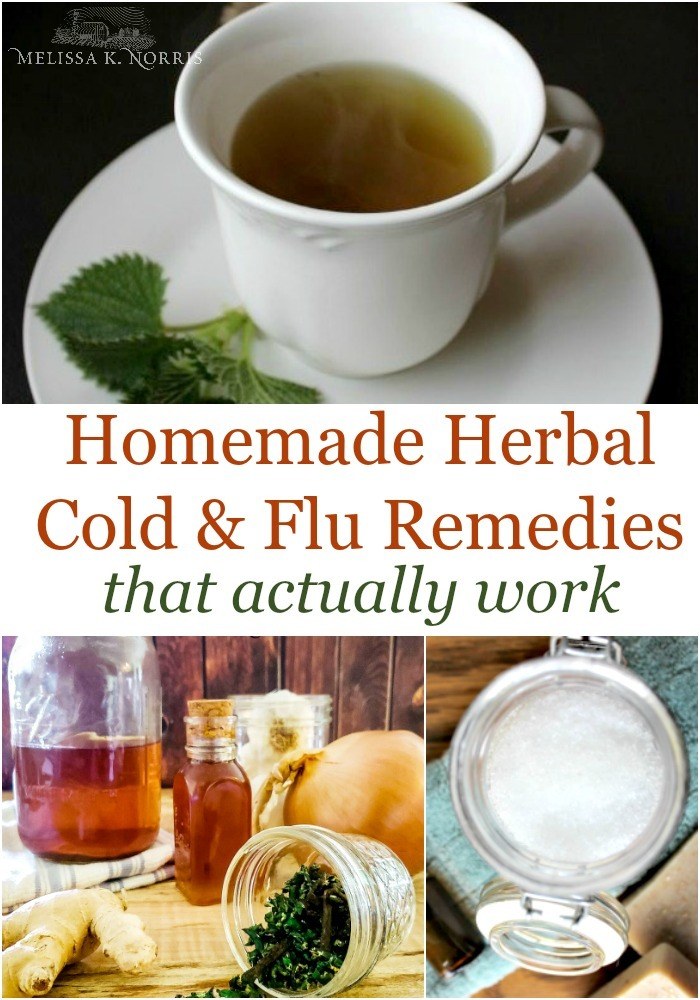
Other Herbal Posts You May Like
- Best Method for Drying Herbs (For Stronger Medicinal Properties)
- Best Medicinal Herbs to Grow From Seed
- Growing Cut Flowers for Business or Pleasure
- Best Method for Drying Herbs (For Stronger Medicinal Properties)
- Best Medicinal Herbs to Grow From Seed
- Benefits of Rosehips (Growing, Harvesting & Medicinal Uses)
- How to Make Elderberry Syrup + Additional Add-Ins
- Echinacea Tincture – How To Make It & Use It
- Homemade Traditional Fire Cider Recipe & Benefits
- Herbal Medicinal Tea (How to Make Your Own)
- 5 Tips to Harvest Herbal Flowers for Medicinal Purposes
- How to Make Elderberry Syrup + Additional Add-Ins
- Echinacea Tincture – How To Make It & Use It
- Homemade Traditional Fire Cider Recipe & Benefits
- Herbal Medicinal Tea (How to Make Your Own)
- 5 Tips to Harvest Herbal Flowers for Medicinal Purposes
- Alternative Medicine & What to do if Your Medicine Isn’t Available
- Herbal Home Remedies for Cold and Flu
